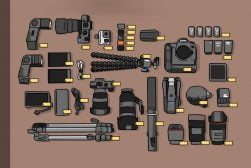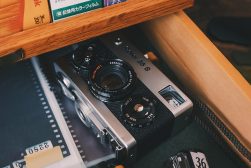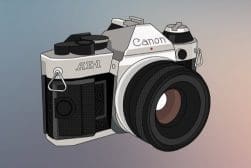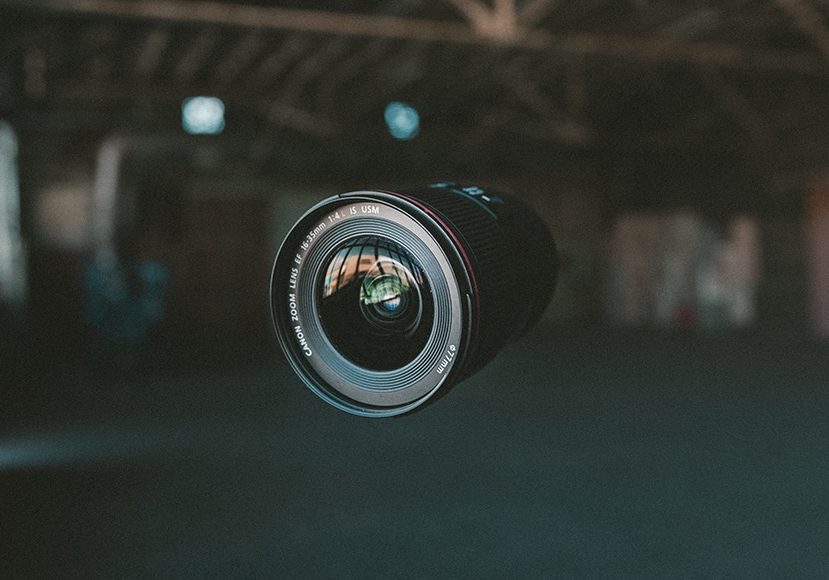
What to Check When Buying Used Camera Lenses (21 Pro Tips)
Buying used camera lenses is an affordable way to expand your creative potential as a photographer. Learn how and where to do it, as well as 21 top tips.
Ever felt tempted to buy a used lens but opted out because you were afraid that you might get scammed?
Or maybe you were wondering if it’s ok to buy used camera lenses at all? (Is it better to always buy lenses new?)
The good news is that it’s absolutely fine to buy your camera lenses used!
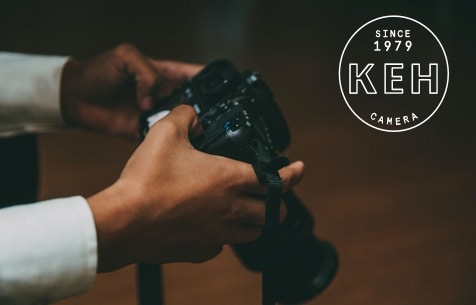
#1 place to buy & sell used lenses and cameras with the most competitive resell rates and expert help.
With a bit of groundwork and luck, you can grab some great deals. You just have to be a little discerning in how you go about it.
So while it’s true that there are some unscrupulous sellers out there, you don’t need to be a pro to buy used camera lenses successfully.
This guide will help you know what to look for, who to buy from, and some of the best tips for avoiding getting scammed when researching lenses for sale.
Let’s get started.
Table of Contents
21 Tips for Buying Used Camera Lenses in 2023
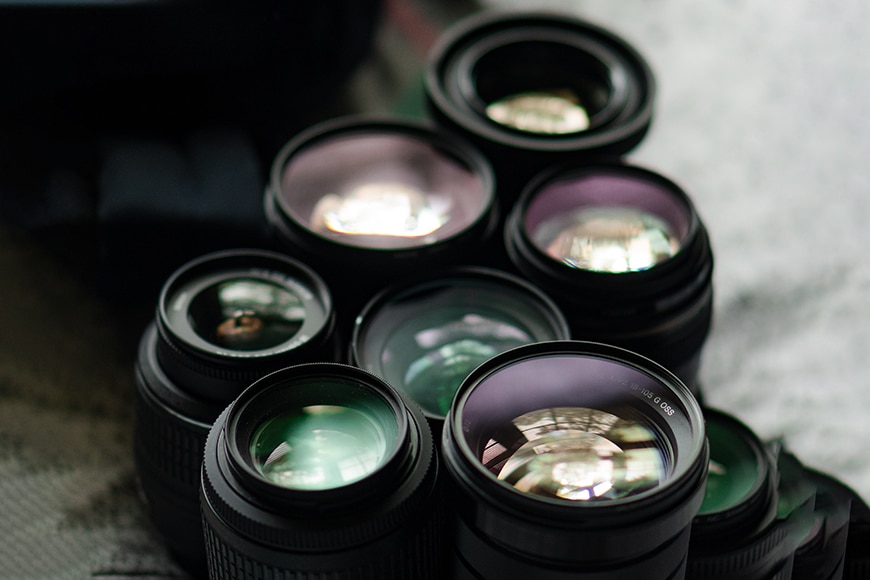
Whether you’re buying used lenses online or at your local flea market, here are our top tips for making sure you don’t end up with a dud!
Some of these camera lens buying tips are only relevant if you can actually handle the lenses prior to purchasing, but we’ve also included a few that apply to buying online as well. (Remember, there’s always the option to rent a camera lens: see our guide.)
Let’s start with tips for buying a used lens in person.
-
What to bring with you
1. Camera body – If you want to make sure a lens works fully – both in general and on your camera specifically – you’ll need to try it out on your camera. To be courteous, ask the seller beforehand if they’re ok with you mounting the lens on your camera bodies. If they’re not, it’s probably best to look elsewhere – there might be something they don’t want you to see.
2. Laptop – We all know that an LCD screen is an unreliable indicator of what’s really going on in the image. Bringing a laptop (and a memory card reader!) will help you get a much better look at the images. If the seller is on the up and up, they won’t mind hanging around a few more minutes while you do a quick scan over a couple of photos taken with your memory cards. You’ll also get a better idea if the lens needs calibration.
3. Filter (optional) – If you’re planning on using filters with the lens, make sure to bring one of your own filters to try on it. (Find out the filter size before arriving.)
-
Examining the body of the lens
1. Scratches and dents – A little bit of wear and tear on a used lens is to be expected. Minor scratches on the exterior, a bit of the paint or rubber worn off – these are unlikely to affect the interior optics. Just make sure they’re reflected in the price. Dents and dings, however, are a serious no-go. They indicate a blow hard enough to have possibly affected the functioning of the lens. See also: how do you know if a camera lens is damaged?
2. Lens glass – Thoroughly examine the lens glass, both on the front element and the rear. Make sure there are no scratches, chipping, or other blemishes. Shining a light inside (the flashlight on your phone will work just fine) will make any blemishes fairly obvious. Heavily damaged glass will obviously affect the image quality, but a few hairline scratches may be OK.
3. Buttons and switches – These should move smoothly. Avoid lenses with controls that are gummy or sticky when you move them.
4. Aperture blades – Older lenses can end up with oil on their aperture blades which can affect how they function. You can usually see it on the blades as you turn the ring. If it’s a modern lens with an electronic diaphragm, you’ll need to mount it to your camera to make sure the blades are working smoothly.
Pro Tip: If your camera has a depth-of-field preview switch, set the camera to the smallest aperture and press the DOF preview button. The aperture blades should snap smoothly into place.
5. Filter threads – Cross-threading is a common occurrence and something you absolutely won’t be able to live with if you plan to use filters with the lens. As mentioned above, the easiest way to check is to bring your own filter and try it out on all the second hand lenses for sale.
6. Contact points – If you’re looking at a modern lens, take a look at the contact points on the backside of the lens. They’re what allow electronic information to pass from the lens to the camera. Most are gold-colored and should be clean and shiny and in a similar high-quality condition of the lens when it was brand new.
7. Mounting ring – While you’re looking at the back of the lens, take a look at the mounting ring and make sure there’s no dirt or grime gumming it up. It also needs to be free from dings and dents.
8. Zoom and focus rings – Ideally, both the zoom and the focus rings will have a bit of resistance to them when you turn them. The zoom ring especially should never be completely slack. A zoom ring that’s too easy to turn could be a bit too worn for much further use.
Also, neither ring should have any “crunchiness” or grinding. If they do, this could be a sign that there’s sand or dirt inside the lens – not a good thing.
9. Fungus and mold – If you’re looking into an older lens that’s spent time in a humid climate, you’ll need to check the lens for mold. If you see something that looks like dried water spots on a mirror (early-stage mold) or tendrils that resemble spider webs (later-stage mold), the lens is a no-go.
Check for mold when you shine your light through the lens during your lens glass inspection.
These things won’t be easily cleaned, no matter how many times you attack them with a microfiber cloth, wipes, or lens pen.
10. Rattling – Give a slight shake to the lens and make sure there’s nothing bouncing around in there. While a little bit of rattling is normal for some lenses (especially those with IS), loud rattling likely means there’s something loose.
-
Examining the optical condition
1. Check the focus – Mount the lens to your camera and check both the autofocus (if it has it) and the manual focus. For the autofocus, focus first on something close and then on something in the distance. If the lens is a zoom lens, do this for all focal lengths. The autofocus should be crisp and smooth, without any hunting.
2. Test the aperture/diaphragm – Set the lens to aperture priority and take two photos – one wide open and one fully stopped down. If either of the images comes out too dark or too bright, something could be wrong with the diaphragm.
3. Check the IS – If you’re looking at a lens with image stabilization or vibration reduction, take a few photos with the IS turned on with a slow enough shutter speed to show if the IS is working. If you know how many stops the IS is supposed to give you, test it out accordingly.
4. Examine the images on a laptop – Having a larger screen will make it easier for you to see if there are any abnormalities in the overall coverage or any blemishes you weren’t able to see during your lens glass inspection. Image quality should be as you’d expect if purchasing a brand new lens, even if the lenses used to be shot professionally or for any high volume photography activity.
-
Tips for online purchases
1. Check your source thoroughly – If you’re buying through an individual and not through a vetted store, make sure you do as much research on the seller as possible. If they’re on eBay or another platform that includes feedback scores, read the feedback – not just on the item but also on the seller as an individual. Also, be sure to read the negative feedback. If there’s a pattern of selling faulty gear, you need to be aware of it.
2. Return policy – Make sure the seller offers a solid return policy. This is hard to do on platforms like Craigslist and photography forums, but most retail stores will have one, as well as most sellers on eBay or Amazon. Check out our guide to the best places to buy and sell used cameras for some retailers with solid returns policies.
3. Ask why – If you’re buying from an individual, ask them why they’re selling the lens. Sometimes the answer (or the lack of answer) can be quite illuminating. If the seller doesn’t have a ready answer that sounds reasonable (i.e. they’re switching platforms, etc.), you might want to ask a few more pointed questions, at least until you’re satisfied it’s not because the lens is defective.
4. There should be multiple high quality images – Anyone selling online should have multiple, high-resolution images of the item they’re selling. Avoid sellers who are using stock images (i.e. it’s not the actual lens for sale in the photo) or who refuse to offer more images upon request. This is especially important if you can’t verify the seller’s credentials elsewhere.
5. Make sure to get full contact information – Once you decide to buy from someone, make sure you get all their contact information. This includes their full name and mailing address. If you haven’t already, look them up online. If something goes wrong with the lens you’ll need to know that the return address (and the person themselves) is for real.
-
Should you buy online or in-person?
Well, that depends.
Buying a used lens from one of the larger online stores ensures that your lens works; if it doesn’t, the warranty/return policies will usually take care of you… but that’s not where the biggest savings are.
Buying in person – whether at a local store or from an individual – allows you to manually inspect the lens and see how it functions with your camera. Local stores will have decent return policies/refunds, but again, won’t necessarily offer the best deals.
Buying from an individual is the riskiest option, but that’s generally where the biggest savings are. Plenty of people just want to change systems or have found that they’re no longer using a lens or maybe never used it much in the first place.
Getting a lightly-used lens for a fantastic price is a wonderful feeling indeed! You may have bought cameras second hand before, so it’s great to have similar savings when shopping for used camera lenses too.
If you’re looking for the biggest savings, start with private sales – just be very careful as there are no guarantees when buying from individuals.
Follow all the tips above about buying used camera lenses safely, and, above all, do your research!
Where Can I Buy Used Camera Lenses Online?
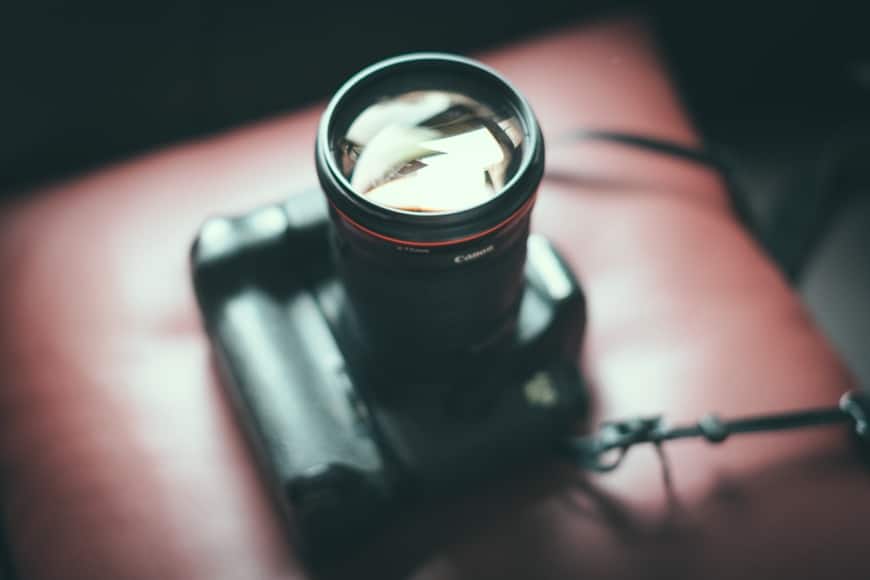
Credit: Alexander Wang
There are a number of fantastic online venues for buying and selling used lenses. Some are businesses that focus exclusively on camera gear (i.e. KEH Cameras, Adorama, and B&H Photo).
Others sell a wide variety of items but still offer great deals on cameras and lenses in top condition.
Here are our top picks for where to buy (and sell) used lenses for your photography exploits this year.
1. KEH Camera (Our #1 Choice)
KEH is the premier choice for buying used lenses and cameras. They may well be the only online retailer completely focused on used camera gear.
As such, they’ve developed a stringent lens inspection process and detailed grading system. Add to that the fact that everything is backed by a 180-day warranty and a 14-day full-refund return policy, and you really can’t go wrong.
KEH is also a great source for cheap film cameras.
Note: Shipping to the USA only
2. B&H Photo
B&H is another used camera gear favorite. They have a large retail site and their used equipment department often has some good deals. All of their used lenses are thoroughly tested and each comes with a 90-day warranty.
3. Adorama
Rounding out the big three in terms of online retailers, Adorama is a trusted name in the world of camera gear. Like B&H Photo, they have a sizable used equipment section and an excellent used lens department. Their rating system, while not as detailed as that of KEH, is nonetheless quite helpful and everything has a 30-day money-back guarantee.
4. eBay
Perhaps the largest online marketplace in the world, eBay allows for both auction and “Buy It Now” options. Buying from individuals on eBay isn’t quite as secure as buying from trusted retailers (although many of the same retailers are also selling on eBay), but the platform automatically offers a money-back guarantee. There’s also a pretty detailed feedback section on each seller that will let you know if there have been problems in the past.
5. Craigslist
By far one of the riskier places to shop for used lenses, Craigslist is one place you can score some absolutely fantastic deals. There aren’t any safeguards built into the platform – you’ll need to negotiate everything with the seller – but it’s worth it if you can find the lens you’re looking for. Just use caution and the tips above – there are many unscrupulous sellers on Craigslist.
6. Amazon
The behemoth of online retailers, Amazon unsurprisingly has plenty of used lenses available. Select the “buy used” option or, if you’re looking for something closer to refurbished, you can take a look at the Amazon Renewed program. Just be sure to check the seller’s ratings and be aware, Amazon no longer accepts PayPal purchases.
7. WEX Photo Video
If you live in the UK, Wex Photo Video is an excellent choice for used lenses. They have a number of brick and mortar stores across the UK, offer free delivery when you purchase online, and give a 12-month warranty on all used products.
Note: UK, Channel Islands, Isle of Man and British Forces postal addresses only
8. Camera World
Another UK-based store, Camera World ships to Europe as well as the UK and has a sizable used equipment section. Anything over £50 comes with a 6-month guarantee, in addition to a 7-day no-questions-asked money-back guarantee.
Note: UK and Europe only
9. Henry’s
One of the leading stores for used lenses in Canada. All of their used products come with a 90-day warranty and most items also have a 15-day refund or exchange.
Note: Canada only
9. Other Online Classified Ads
While Craigslist is one of the better-known classified sites, there are plenty of others. Swappa, Gumtree, LetGo, and Locanto, all have some great deals. If you’re in Australia, the Australia Camera Market is smallish but has a good reputation.
Where Can I Buy Old Lenses (In Person)?

Credit: Anna Auza
Many of the online camera stores mentioned above have brick-and-mortar stores too.
These include:
- KEH.com
- B&H Photo
- Adorama
- Wex
- Camera World
- Henry’s
Other places you can buy used lenses in person include:
- Craigslist
- Best Buy (in-store pick-up is required for open-box/used gear; US only)
- Your local camera store
- Facebook Marketplace (local)
- Local Facebook photography groups
- Local camera clubs
Final Words
It’s not really too difficult to buy used lenses successfully. You just need to be thorough in your research and get your inspection routine down. With luck, you’ll land some amazing deals, and your photography will thank you for it!
What are your experiences with buying used lenses? Have you ever gotten stuck with a dud? Ever landed a tremendous deal? Tell us about it!

#1 place to buy & sell used lenses and cameras with the most competitive resell rates and expert help.






